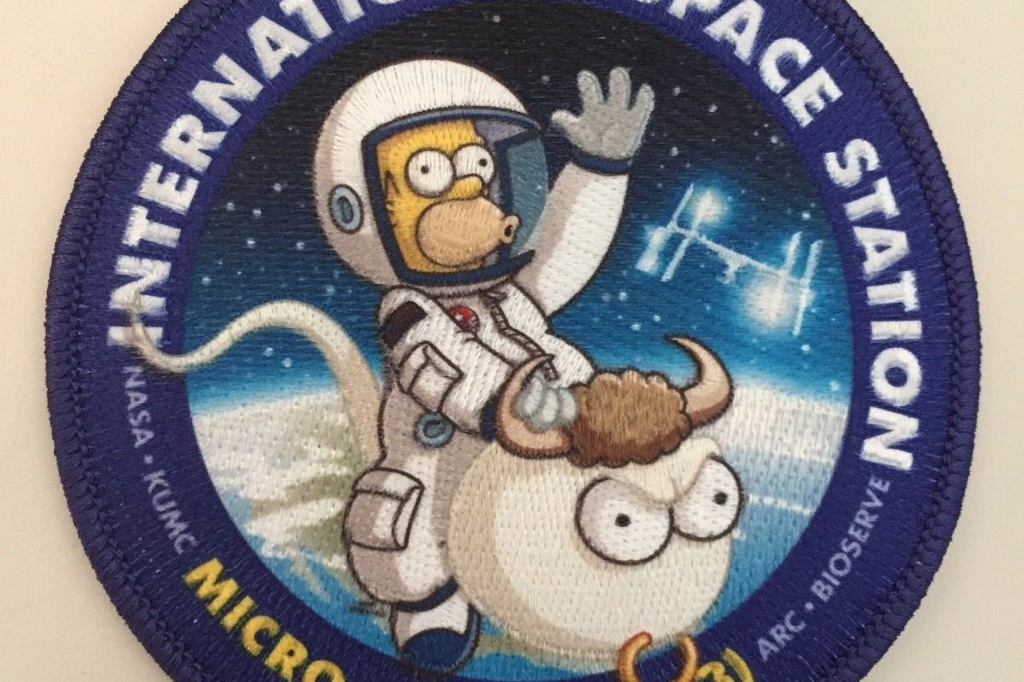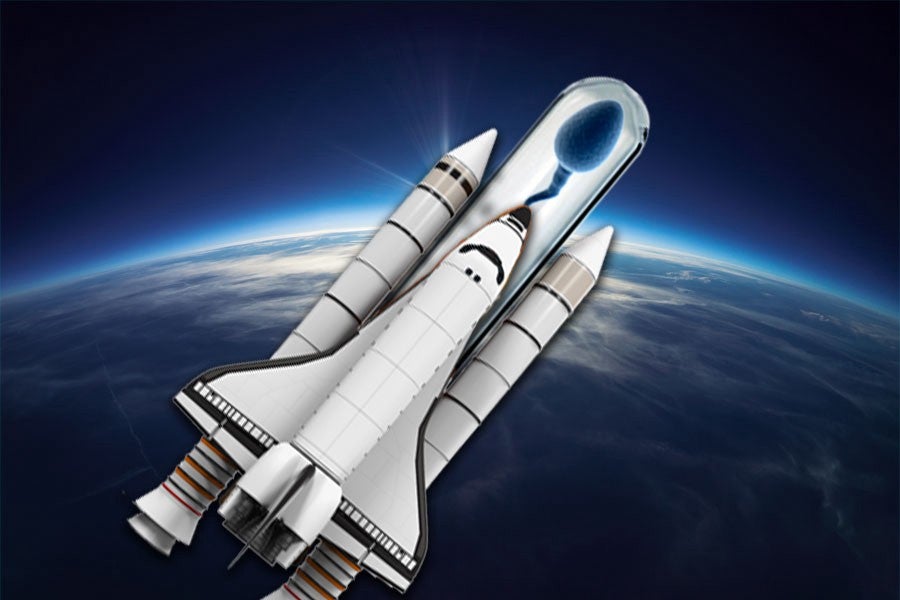Early last month, NASA shot a dozen massive loads into orbit. And by massive loads, I mean, of course, containers filled with frozen sperm from 12 anonymous human donors (along with six samples of bull sperm).
The samples are central to what NASA is calling the Micro-11 experiment, which aims to explore how sperm reacts to zero gravity (and to find out, once and for all, whether we’ll be able to reproduce on Mars). “Little is currently known about the biology of reproduction in space, and this experiment will begin to address that gap by measuring, for the first time, how well bull and human sperm functions in space,” NASA wrote in a press release. When the sperm arrives at the International Space Station, astronauts there will thaw it, then add chemicals “that trigger activation of sperm movement and preparation for fusing with an egg.” From there, they’ll use a microscopic camera to shoot video of the sperm. That video will be analyzed by NASA when it and the sperm are later sent back to Earth.
The hope is that the results are more promising than earlier space sperm studies. In 1979, for example, Russians attempted to breed rats in space, and while two of the rodents became pregnant, both suffered miscarriages. (A 2017 study found that exposure to “very low doses” of charged particles in space damaged the ovaries of female mice.) Subsequent experiments involving sperm from sea urchins and bulls determined that, while the sperm actually swam faster in microgravity than they did back on Earth, they struggled to engage in the process of penetrating and fertilizing eggs. More specifically, these animal experiments found that capacitation — an essential part of reproduction that renders sperm capable of fertilizing eggs — occurs much more slowly in space, which doesn’t bode well for potential space babies.
While none of this confirms that we’re unable to reproduce in space — again, Micro-11 is the first experiment to analyze human sperm, and the results may be different when compared to animal studies — we’re admittedly skeptical, considering how difficult it is to simply maintain an erection in space. That’s partly because space reduces the number of red blood cells flowing through your system, which, in turn, lessens the amount of oxygen-rich blood sent to your penis (more on that here).
Still, if we actually plan on setting up shop on Mars, we need to know absolutely for certain whether or not we can procreate there. “One of the long-term interests of NASA is looking at multi-generational survival as we plan longer and longer-duration missions,” Joseph Tash, a researcher at the University of Kansas Medical Center who will examine the sperm when it returns, writes in a press release. (Tash humorously commissioned Matt Groening to create a patch for this mission, which shows Homer Simpson riding a bull sperm into space.) “As we plan to travel beyond the space station with thoughts of colonization on the moon and Mars and other heavenly bodies, the question of whether or not multi-generational survival can occur — not only in animals but in humans — is a very fundamental question that needs to be addressed.”

Well then, good luck up there, little fellas.

